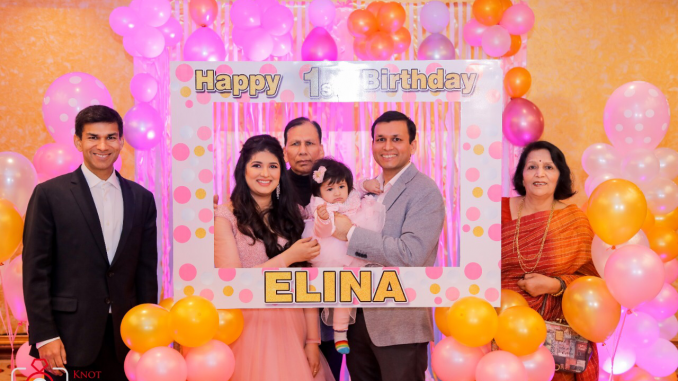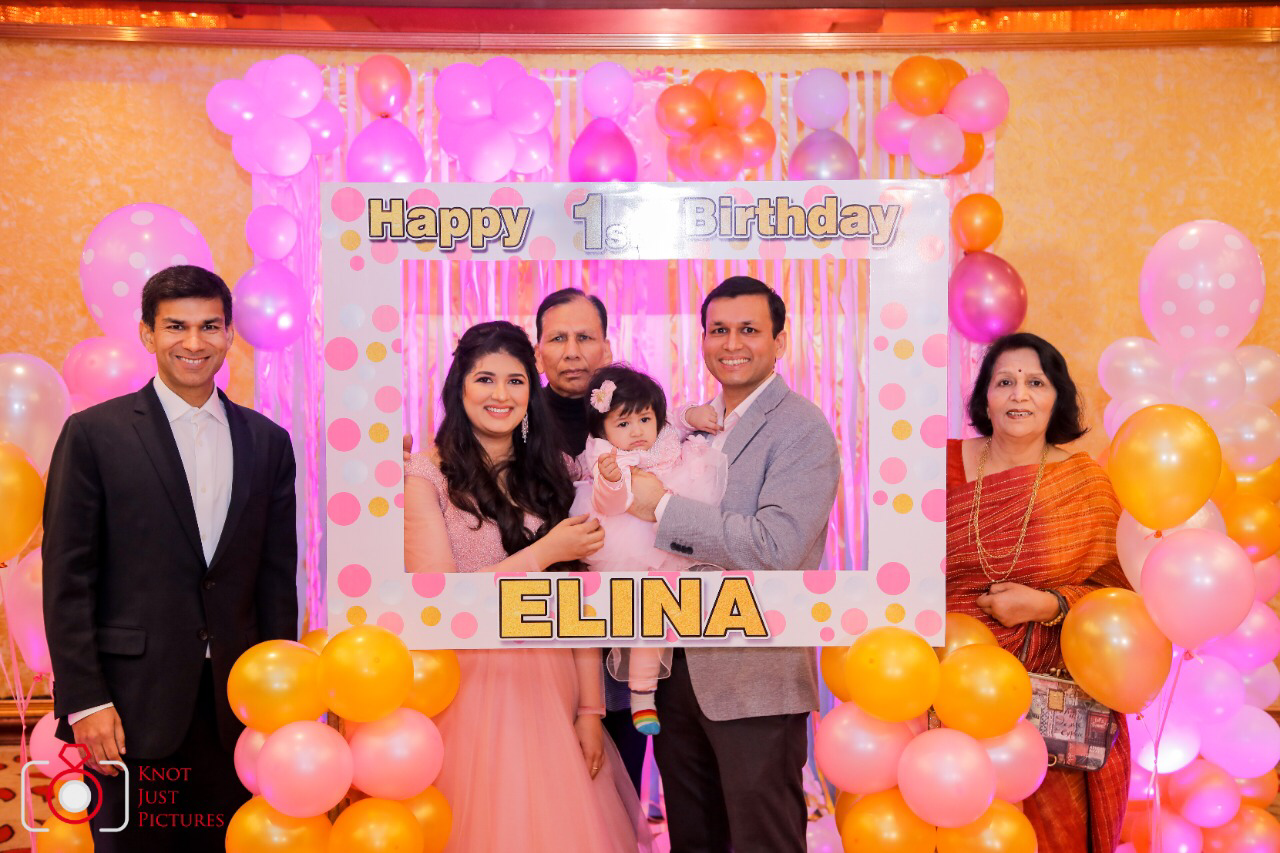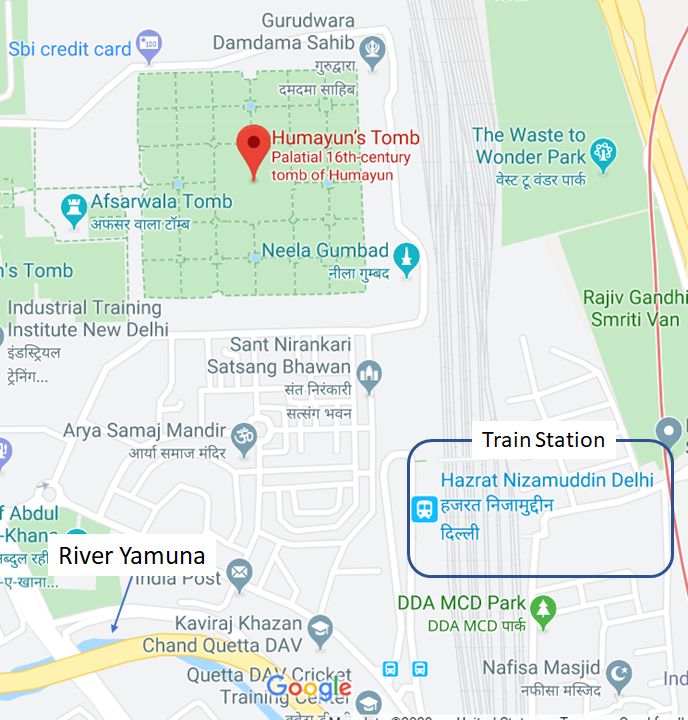
I traveled to India from 12/27/2019 – 1/9/2020 to see family and celebrate my niece’s first birthday. The last time I visited India was in Feb 2018 so it had been almost two years since my last visit. This isn’t a big deal as I get to see most of my immediate family in Helsinki where my brother and sister-in-law live a couple of times a year. In this blog, I’ll describe some of the memorable experiences from this trip.
Table of Contents
Getting there
Air India now has direct flights from Washington Dulles to New Delhi which is quite convenient. At ~15 hrs, the flights are some of the longest one can fly, but much better than splitting the trip into two legs of ~9 hrs each with 3-4 hour layovers. The flights were mostly uneventful, however Air India’s cavalier attitude and lack of attention to detail was on full display. On the onward flight, my checked baggage didn’t make it to New Delhi, despite the direct flight. After going through a clumsy lost baggage reporting system and multiple rounds of emails, I finally had my baggage delivered 4 days later. I do have to give the pilot credit for safely landing the plane in the dense Delhi fog – I couldn’t see anything out of the window until the moment we landed. The return flight took off more than an hour late because the staff was having trouble closing the airplane door. The USB charging port and parts of the on-board entertainment system weren’t working (despite the plane being a new Boeing 787 Dreamliner) and the food was average at best. I did see a couple of nice movies on the plane – Ready Player One, a movie about Virtual Reality by Spielberg, and Kingsman – The Secret Service by Matthew Vaughn. I highly recommend both of them. Also saw a Hindi Classic “Lamhe” by Yash Chopra. Typical of most Indian movies, it is overly dramatic and unrealistic, but features nice sights of Rajasthan and some decent acting and touching dialog.
A book I’m reading
Shortly before leaving for India, I purchased a book titled “The Narrow Corridor: States, Societies, and the Fate of Liberty” by Daron Acemoglu and James Robinson.
I slowly read the book throughout my trip. The book argues that liberty is hardly the natural order of things. Liberty emerges only when society is mobilized, actively participates in politics and holds its own against the state. The state institutions must also be strong enough to quash customs and norms that constrain economic activity and provide the services that people need. Such an arrangement is called the “Shackled Leviathan” by the authors – meaning that a strong and capable state (the leviathan) is kept shackled by a vigilant and mobilized society.
To argue their case, the authors cite interesting examples from all over human history – ancient Greece, China, Africa, Europe and India. Their analysis of why India continues to be poor despite a talented and entrepreneurial population that has achieved great success in other countries and a vibrant, multi-party democratic system of government is a very good read.
General observations
Visiting India is always a study in contrasts. The terrible traffic, poor air quality, incessant honking, trash on the street have changed little. I got a healthy dose of all of this on the way from the New Delhi airport to my parent’s apartment on the other side of Delhi, a ~40 Km journey that took almost 2 hours even though I landed on a Saturday. The smog was made worse by the unseasonably cold weather. Delhi was going through the coldest winter in 118 years. The first few days of my visit, the temperature hovered barely above zero degree Celsius (32 F). By western standards, this may not appear very cold. However, since the vast majority of homes are not centrally heated (in fact many people live in makeshift dwellings, rather than concrete homes) and the thick smog blocks off the sun for most of the day, even 4 degree Celsius feels bone chillingly cold. The first few days were mostly spent huddled indoors with multiple layers on and as many space heaters running as our electric fuse would allow.
On the bright side, I’m amazed by the stoic pragmatism with which people in Delhi carry on with their lives despite the terrible traffic and bad air. My parents have hired help for cooking food, cleaning the dishes, sweeping the floors and other household chores. The helpers arrive every day on time and perform their tasks without complaining and with good humour. Many parts of the service economy in Delhi function with world class efficiency. One can order pretty much anything online and it will be delivered right at your doorstep in two days. Not happy with your order and want to place a return? No need to box up your order and visit the post office, the courier will pick it up from your home. Want to get a pedicure but don’t want to go to the spa? No worries, the pedicure person will come to you, with all of their equipment. India has its own Uber called “Ola”. An Uber driver will only wait a couple of minutes before moving on to the next ride, an Ola driver will happily wait for 10-15 minutes and call you a few times if you are running late. I give entrepreneurs in India a lot of credit for creating efficient, world class businesses despite the problems they face with poor infrastructure, rigid labour laws and slow bureaucracy.
You may have heard of the ongoing protests in India, against the Citizenship (Amendment) Act (CAA), which was enacted into law on 12 December 2019, The Amendment benefits Hindu, Sikh, Jain, Buddhist, Christian and Parsi refugees from Afghanistan, Pakistan and Bangladesh who sought refuge in India before 2015; the Amendment leaves out Muslims and others from these countries, as well as Tamil refugees from Sri Lanka, Rohingyas from Myanmar, and Buddhist refugees from Tibet. I witnessed some of these protests on the way from the airport to my parent’s apartment. I haven’t read the text of the act and try not to form opinions based on hearsay, but it does seem that singling out a particular religion goes against key constitutional protections and the secular fabric of the nation. All Indians are proud of India’s messy but vibrant democracy, equal protection of the law provided to all citizens, regardless of religion or other factors and a loud, rambunctious and independent media that has brought many government misdeeds to light. I hope the current Indian government under the BJP (Bhartiya Janata Party), recently re-elected with an overwhelming majority for a second 5 year term will stay away from divisive issues and focus on economic growth, which the country sorely needs and benefits everybody.
Many people are concerned about the government clamping down on criticism in the news media. I read one of the major Indian newspaper – Times of India regularly when I was in India and was happy to see several articles critical of government policies. So far at least, people are able to publicly protest government policies and newspapers are able to publish critical articles. Let’s hope dissenting views can continue to be freely aired.
A common sight in India is billboards with a smiling face of prime minister Modi next to one of his government’s many “Yojanas” (programs) to clean up public spaces, build infrastructure, provide loan relief to farmers and so on. For every one of these programs, there are several similar Yojanas proposed by previous governments that spent a boatload of public money and achieved little. I’m constantly amazed by how quick Indian governments are to propose new programs instead of performing a honest retrospective of previous similar programs, building on successes and learning from failures. An editorial in the Times of India touched upon this issue in the context of a Yojana about planting new saplings when the saplings and young trees resulting from the previous Yojana are dying from lack of water.
The Birthday Party..
The main purpose of the trip was to attend my niece’s first birthday party. Planning large events in India is not easy. When people nod their heads indicating they’ll do something, they mean may be at best, if all the other dependencies of the task materialize. One must follow up with people over and over again and beg, plead, cajole them to deliver. My parents, brother and his wife did a great job planning the party. They picked a nice venue close to my parent’s apartment and personally managed all the details, down to the placement of the furniture, stage, props etc. I accompanied my brother and sister-in-law on many of the numerous visits to the venue to make sure things were in order. A couple of particularly thoughtful items were a slideshow of the key moments from the first year of my niece’s life and a blessings book where attendees could write a message for my niece (who behaved splendidly, better than anyone had imagined). It was also great to see relatives that I hadn’t seen in many years.
Gift giving is a big part of the ritual in Indian parties. People are expected to bring gifts befitting their status and resources and in turn are given return gifts worthy of the host. Majority of these gifts create little enduring happiness but consume a lot of “stuff” (cardboard/plastic boxes, wrapping paper etc) most of which ends up in the landfill. I feel the best gift we can bequeath the next generation is a sound environment. If you don’t have a habitable planet, then nothing else matters. It behooves us all to try to minimize our impact on the environment by limiting consumption that has little long term value. One of my professors in college used to say – “live simply so others may simply live”. In the context of parties, one way to reduce environmental impact is to dispense with all gift giving and advice people to contribute to their favorite charity in lieu of a gift. My brother agrees with my viewpoint but my parents wanted to throw the type of party they are accustomed. Who can blame them – my niece is their only granddaughter so far. My dad also turned 70 in December which was an additional occasion to celebrate.

Seeing my niece grow..
I visited Helsinki last year when my niece was born and was lucky to hold her moments after her birth. I saw her again in Helsinki in October 2019. It is fascinating to see babies progress from being completely helpless to being able to toddle around the house, ask for things by pointing at them and even climb out of the bed in less than a year. Babies acquire these skills by interacting with the environment through semi-supervised play. I couldn’t help comparing how babies learn with current neural network based Artificial Intelligence systems (my area of expertise). Current AI systems learn to recognize patterns from large volumes of labeled input and output data (for example, recognizing cats and dogs from a large number of labeled cat and dog pictures). This labeling process is expensive and the learning that results from it is often brittle and prone to breaking down catastrophically when an unfamiliar data item is encountered (for example, a stylized picture of a cat/dog). Indeed, a one year old baby has far superior object detection, manipulation and navigation skills than the most advanced robot designed by man. A major area in AI research is called “weakly supervised curiosity based exploration” which aims to mimic how babies naturally learn by learning simple but robust skills by playing with the environment in a mostly unsupervised way.
Museum Trips
The capital city of a country such as India with a long, rich and complex history is expected to be teeming with museums. This is unfortunately not the case. There are only a handful of museums worth visiting. On this trip, I got a chance to visit one museum and one historical building. I’ll describe the highlights of each visit below.
National Building Museum
The National Museum is located in the heart of the city and houses a number of artifacts from the ancient and medieval history of India. I’ll describe a couple that left an impression on me.

The statue of Budha in the first picture is an example of “Gandhara art” (Gandhar is a region in modern day North Western Pakistan) from the “Kushan” empire (1-5 AD) that spanned Eastern Afghanistan, Pakistan and Northern India. The statue features Buddha dressed in garments resembling those seen on Roman imperial statues. Kushan coins bear Greek letters and depict Greco-Roman iconography. This is because the Kushan empire lay at the crossroads of the Roman and Chinese empire and maintained trading contacts with each.
In fact much of what we know about this empire comes from Han Chinese records. I vaguely remember learning about this empire (specially its most famous king – Kanishka) during 6-7th grade history in India. Today we think of India as predominantly a Hindu country and Pakistan and Afghanistan as Muslim ones, frequently at loggerheads . I thought the statue is a good reminder of how different the entire region used to be.
The other picture is the “Dancing Girl”, a prehistoric bronze sculpture made ~2000 BC in the Indus Valley Civilization city of Mohenjo-daro using the lost wax process. The Indus Valley civilization was contemporaneous with the Egyptian and Mesopotamian civilization and covered large parts of central Asia, and modern day India and Pakistan. I remember seeing a picture of this statue in ancient Indian history classes in middle school and got quite a kick out of seeing it for real. Somehow I had imagined it to be much larger. Incidentally, the museum has the best description of the lost wax process I have seen so far. I encourage you to look up how the lost wax process works, it is quite ingenious :-).
The museum trip was a good experience. A visitor to New Delhi, interested in learning more about Indian history – specially what came before the Mughals and the British would find it worth a visit.
Some peeves – the exhibits should be annotated better and focus less on spirituality and connection with Hindu mythology and more on the historical context that is backed by peer reviewed archaeological evidence and gives the viewer a sense of what was going on at the time rather than just the pose a statue is in.
Humayun’s Tomb
The second trip was to the tomb of emperor Humayun (1508 – 1556), the second Mughal emperor and son of Babur, the founder of the Mughal dynasty in 1526. The tomb was commissioned by Humayun’s first wife and chief consort, Empress Bega Begum in 1569-70. The tomb was the first structure to use red sandstone at such a scale. Humayun’s tomb introduced many architectural elements later used in the most famous Mughal tomb – the Taj Mahal, built by emperor Shah Jahan, the great grandson of Humayun for his beloved wife, Mumtaz Mahal. Humayun’s tomb was declared a UNESCO World Heritage Site in 1993. Humayun’s tomb is placed at the centre of a 30-acre (120,000 m2) Persian-style garden with a quadrilateral layout. The tomb hosts the graves of several other Mughal emperors, queens and princes and the tomb complex is surrounded by tombs of several other lesser Mughal dignitaries.
Building tombs was quite the thing in the Mughal era. The first five Mughal emperors built splendid tombs, which are now important historical sites that garner significant tourist attraction (see timeline below).

Humayun’s tomb was placed near the banks of the river Yamuna so river barges could be used to transport the sandstone used to build the tomb. Today, because of geological changes and poor water management, the river Yamuna has changed course and is now a poor, shriveled shadow of its former self. In an ironic twist of fate, Nizamuddin, one of the biggest train stations in Delhi is now located right behind the tomb and trains can be seen and heard while touring the tomb complex.


The fortunes of the tomb oscillated with that of the Mughal empire. Around the 17 century, as the focus of the Mughal empire shifted towards Agra, the tomb and surrounding gardens fell into disrepair. During British rule, the gardens were converted into English style gardens and after independence, Muslim refugees fleeing India lived in the tomb complex for several years and used the gardens for agriculture. In 1993, an extensive restoration effort was undertaken which is now nearly complete. The tourist center near the entrance to the tomb does a good job outlining the history and significance of the tomb and shows how the restoration effort was carried out. It emphasizes that the restoration was conducted with the cooperation and involvement of the surrounding community (which is necessary in a democratic country like India) and resulted in significant job creation for local craftsmen and stone workers. All of this is laudable. However, in the pictures emphasizing this job creation, many of the people holding the shovels appeared to be children in their early teens!
That’s it! Hopefully you enjoyed reading this blog and found it informative.

Leave a Reply